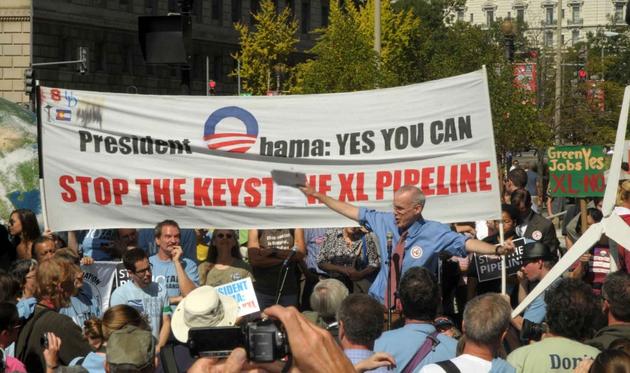According to The Wall Street Journal, tapping into Alberta’s tar sands is starting to look like a much riskier business proposal.
Amid rising costs, gyrating prices and a burst of supply competition down south, Canadian oil companies are rethinking investment in one of North America’s earliest and fastest-growing “unconventional” oil frontiers — Alberta’s oil sands. …
The slowdown so far is limited, affecting only the industry’s most expensive segment, which mines and upgrades bitumen into a low-sulphur, synthetic crude. Still, it underscores the extent to which today’s booming North American energy-production growth remains at the mercy of market forces, which often reward higher output with lower prices. That dynamic can sap fresh investment incentives, especially in the case of the capital-intensive energy industry.

Let’s take a look at that “burst of supply competition down south.” As we noted last week, the massive spike in U.S. oil production has reversed the flow of crude — quite literally in the case of a pipeline near Corpus Christi. But moreover:
[P]rices for synthetic crude have been buffeted by a flood of new production in the middle of the continent, especially in North Dakota. Producers there are using the same sort of drilling technology that [natural] gas producers have used to unlock fresh supplies of oil. The crude is similar in grade to Canada’s synthetic oil, putting the two blends in competition with each other to find refinery buyers. At the same time, limited pipeline capacity has bottled up Canadian supplies, exacerbating price swings and threatening lower prices to come.
This is putting some big expansion plans up north on the back burner.
You read that? “Limited pipeline capacity.” In the last two paragraphs of the article, they say the words you’ve been waiting for.
More pipeline capacity is on the drawing board, including TransCanada Corp.’s Keystone XL expansion. That project was rejected by the Obama administration this year, but it’s expected to be reviewed by the White House next year, regardless of who wins the election.
Until those new outlets get built, Canadian crude prices will “come under extreme downward pressure” next year and in 2014, with synthetic crude prices expected to drop to their lowest levels in years, according to a market analysis this year by consultancy Bentek Energy LLP. “This could cause a slowdown in oil sands development,” the report warned.
I will readily admit that I have been skeptical of the efficacy of the Keystone XL protests. I’ve written before about how approval of the southern stretch of Keystone has already given TransCanada a way to get its oil to the Gulf of Mexico. But blocking the massive extra-large XL has done more damage than I (and probably many others) might have expected, limiting how much tar-sands oil TransCanada can supply, possibly keeping prices too high to compete.
This is by no means a final victory for Keystone opponents — but it demonstrates that stopping Keystone XL is a valid way to keep toxic tar-sands oil in the ground.



